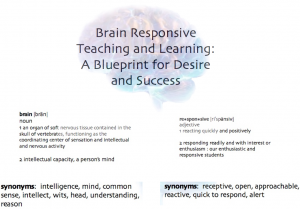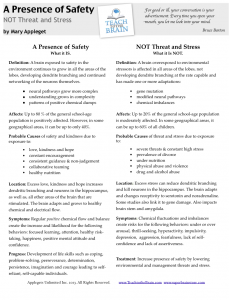A Presence of Safety
What it IS.
Definition: A brain exposed to safety in the environment continues to grow in all the areas of the lobes, developing dendrite branching and continued networking of the neurons themselves.
• neural pathways grow more complex
• understanding grows in complexity
• patterns of positive chemical dumps happen in the brain and throughout the body
Affects: Up to 80 % of the general school-age population is positively affected. However, in some geographical areas, it can be up to only 40%.
Probable Causes of safety and kindness due to exposure to:
• love, kindness and hope
• constant encouragement
• consistent guidance & non-judgement
• collaborative teaming
• healthy nutrition
• healthy exercise and movement
Location: Excess love, kindness and hope increases dendric branching and neurons in the hippocampus, as well as, all other areas of the brain that are stimulated. The brain adapts and grows to healthy chemical and electrical flow.
Symptoms: Regular chemical flow and balance create the increase and likelihood for the following behaviors: focused learning, attention, healthy risk-taking, happy, willing, assertive, positive and confident with self and others.
Progress: Development of life skills such as coping, problem-solving, perseverance, determination, persistence, imagination and courage leading to self-reliant, self-capable individuals.
NOT Threat and Stress
What it Is NOT.
Definition: A brain overexposed to environmental stressors is affected in all areas of the lobes, not developing dendrite branching at the rate capable and has made one or more adaptations:
• gene mutation
• modified neural pathways
• chemical imbalances
Affects: Up to 20% of the general school-age population is moderately affected. In some geographical areas, it can be up to 60% of all children.
Probable Causes of threat and stress due to exposure to:
• severe threats & constant high stress
• prevalence of divorce
• under nutrition
• physical abuse and violence
• drug and alcohol abuse
Location: Excess stress can reduce dendritic branching and kill neurons in the hippocampus. The brain adapts and changes receptivity to serotonin and noradrenaline. Some studies also link it to gene damage. Also impacts brain stem and amygdala.
Symptoms: Chemical fluctuations and imbalances create risks for the following behaviors: under or over arousal, thrill-seeking, hyperactivity, impulsivity, depression, aggression, fearfulness, lack of self-confidence and lack of assertiveness.
Treatment: Increase presence of safety by lowering environmental and management threats and stress.


